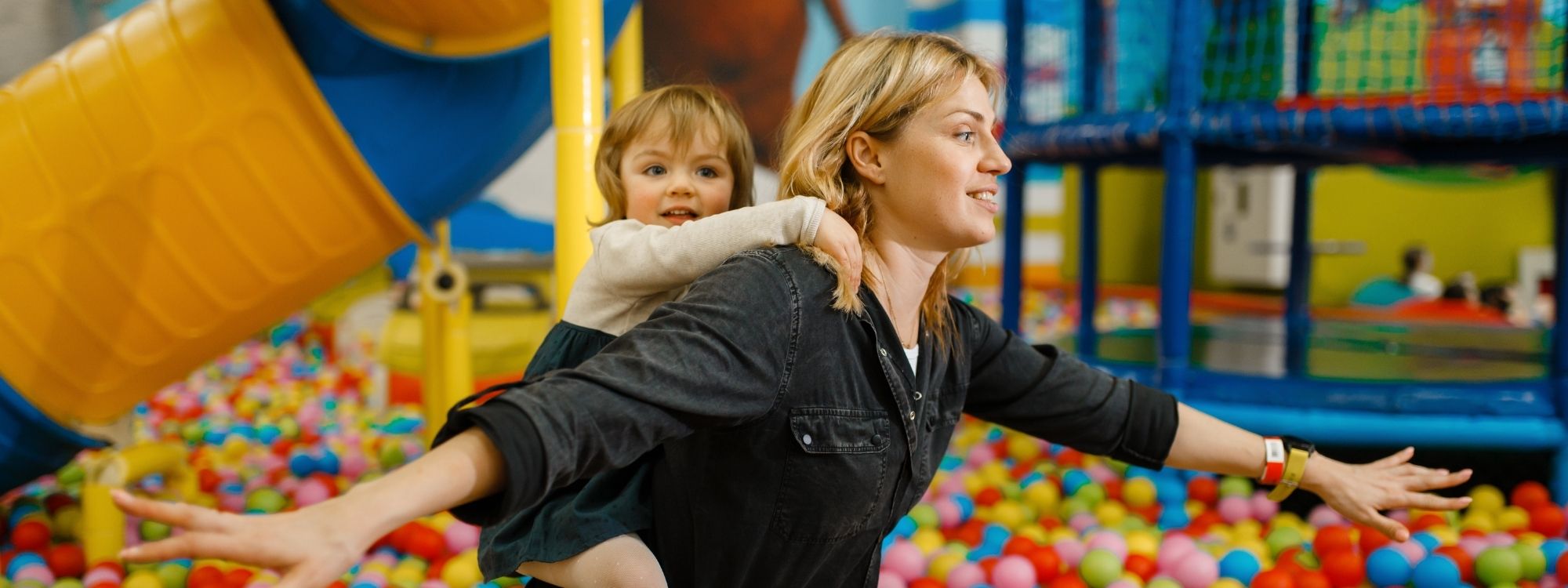Early Signs of Autism in Newborns: What Parents Should Know
Introduction to Autism Spectrum Disorder
Autism Spectrum Disorder (ASD) is a neurodevelopmental condition that affects how a child communicates, behaves, and interacts with others, and includes common symptoms. It’s called a “spectrum” because symptoms and severity can vary widely. Understanding ASD early in a child’s life can significantly improve outcomes, as early intervention leads to more effective support and skill development.
While most autism diagnoses happen after a child turns two or three, subtle signs can emerge much earlier. Parents are often the first to notice something unusual in their baby’s development, such as limited eye contact or delayed babbling sounds. These early signs of autism in newborns may be easy to overlook, but recognizing them is crucial.
Learning about early indicators and how they differ from typical development in infants empowers parents to seek help sooner. An early autism diagnosis enables timely intervention, which can shape a child’s ability to communicate, learn new skills, and build relationships.
Key Takeaway
Recognizing early signs of autism in newborns can help parents take timely steps to support their child’s development. Keep these key points in mind:
- Watch for social and communication differences such as limited eye contact, delayed babbling, or lack of gestures.
- Early signs often appear by 6 to 12 months, even if the diagnosis happens later.
- Developmental milestones matter; missing multiple or regressing skills may signal a need for evaluation.
- Trust your instincts; if something feels off, speak with your pediatrician.
- Early intervention leads to better outcomes, especially when started before age three.
Every child develops at their own pace, but early identification and support give children with autism the best chance to thrive.
Developmental Milestones
Developmental milestones are skills or behaviors most children exhibit by a certain age. These include motor skills, like sitting up or crawling; communication milestones, like babbling or responding to names; and social behaviors, such as smiling or making eye contact. While children develop at their own pace, consistent delays in reaching these milestones can signal developmental differences.
Monitoring your baby’s development can help identify whether they’re progressing typically. Pediatricians often ask about milestones during check-ups for this reason. The earlier developmental delays or red flags are identified, the sooner you can begin assessments and therapy options.
Some typical developmental milestones by age include:
- By 2 months: Smiling at people, turning the head toward sounds
- By 4 months: Cooing and babbling sounds, following moving objects with eyes
- By 6 months: Responding to name, showing interest in social interactions
- By 12 months: Saying simple words, waving goodbye, and imitating gestures
If your baby consistently misses several milestones, consider discussing these concerns with your pediatrician.
Early Signs of Autism
The early signs of autism in newborns and infants are often subtle and develop gradually. Parents may begin noticing differences in how their baby develops and interacts with them or the environment. While missing a single milestone doesn’t always mean autism, a pattern of behaviors can point toward the need for further assessment.
One of the earliest signs includes limited or no eye contact. Babies typically begin to focus on faces and follow eye gaze early in life. A baby who doesn’t track your face, smile in response, or show interest in social interactions may be exhibiting early signs of autism, which may include repetitive behaviors.
Here are some other signs that may appear before a baby’s first birthday:
- Little or no smiling or joyful expressions
- Rare or no babbling sounds by 6 to 9 months
- Not responding to their name by 9 to 12 months
- Limited gestures such as pointing, waving, or reaching
- Repetitive movements like rocking or hand flapping
- Hyper-focus on moving objects or certain sounds
- Unusual reactions to sensory input, like loud sounds or touch
These signs don’t confirm autism but can indicate a need for further evaluation. Trust your instincts and reach out to a professional if something doesn’t feel right.
Autism Assessment
An autism assessment is a structured process that evaluates a child’s behavior, communication, and social development. It’s designed to identify whether a child meets the criteria for autism spectrum disorder and what type of support, such as speech therapy, they may benefit from.
The process usually begins with developmental screenings during pediatric visits. If concerns arise, your pediatrician may refer you to a specialist, such as a developmental pediatrician or psychologist, who can perform a more detailed evaluation.
Autism assessments typically involve:
- Observing the child’s social interactions and behaviors
- Parent interviews about the child’s developmental history
- Standardized testing tools like the ADOS (Autism Diagnostic Observation Schedule)
- Input from therapists or early intervention providers, if applicable
Assessments are crucial not only for diagnosis but also for forming a personalized treatment plan tailored to the child’s needs.
Early Intervention
Early intervention refers to specialized services designed to support infants and toddlers with developmental delays or disabilities, including autism. Research consistently shows that early, targeted therapies can significantly improve outcomes in communication, behavior, and adaptive skills.
These therapies may include:
- Speech therapy: Supports language development and communication
- Occupational therapy: Helps with sensory processing and daily self-care skills
- ABA therapy (Applied Behavior Analysis): Focuses on teaching new skills and reducing challenging behaviors through positive reinforcement
Working closely with professionals allows parents to develop an intervention plan that fits their child’s developmental profile and daily routines. In-home ABA therapy, for example, can support learning in a familiar, safe setting, promoting comfort and consistency.
Autism in Babies
Diagnosing autism in babies is complex, but the earliest signs often appear in the first year of life. Since newborns can’t express themselves through words, observing behavior becomes key. Unusual responses to sensory experiences, like not reacting to loud sounds or avoiding physical contact, can be early indicators.
Parents may also notice that their baby doesn’t imitate facial expressions or sounds, both of which are foundational to communication and bonding. Repetitive behaviors, such as head turning in a fixed pattern or watching objects spin, may also be present.
It’s important to recognize that every baby is different. However, when behaviors occur repetitively and disrupt typical social development, it may be time to seek a formal evaluation.
Autistic Children and Support
Autistic children benefit most when they receive consistent, personalized support across multiple environments: home, school, and community. That support begins with early diagnosis but continues as they grow and face new challenges.
Parents play a vital role in this journey. Collaborating with teachers, therapists, and healthcare providers ensures the child’s needs are met holistically. Support plans might include structured routines, classroom accommodations, or social skills groups to encourage peer interaction.
Even with challenges, autistic people, including children, have strengths and abilities that flourish with the right encouragement. A strong support network allows them to learn, explore, and contribute in meaningful ways.
Autism Diagnosis
Getting an autism diagnosis can be a significant moment for any family. It may come with a mix of emotions, relief, worry, or confusion, but it’s also a critical step toward meaningful help.
The diagnostic process typically involves multiple professionals and stages. After initial screenings, a comprehensive evaluation confirms whether the child meets criteria for ASD. This might include standardized assessments, parent questionnaires, and observation across settings.
Importantly, a diagnosis is not a conclusion but a beginning. It opens doors to services, insurance coverage, and education-based accommodations that can transform a child’s developmental path.
Early Identification
Early identification of autism is one of the most powerful tools parents and providers have. Studies show that toddlers who begin intervention before age three show more progress in social skills, communication, and daily functioning compared to those who start later.
Identifying red flags early, whether it’s a lack of eye contact, missed milestones, or repetitive actions, allows families to take action. Pediatricians, early educators, and ABA professionals can work together to support the child’s development from an early age.
The earlier autism is recognized, the more likely it is that a child will develop the skills needed for independence and lifelong learning.
Autism Spectrum and Development
The autism spectrum includes a wide range of traits, needs, and abilities. Some children may have significant developmental differences, while others may meet most milestones but struggle with social interactions or flexibility in routines.
Because autism affects each child differently, support strategies should also be individualized. Understanding how a child’s development diverges from typical patterns allows providers and families to create tailored interventions.
Recognizing that autism is not one-size-fits-all helps remove stigma and promotes more meaningful, compassionate care.
Autism Assessments and Evaluations
Ongoing autism assessments and evaluations are essential for tracking a child’s progress. Even after a formal diagnosis, children benefit from regular reviews to adjust therapy goals and educational plans as they grow.
Parents should stay involved in these evaluations, sharing insights and concerns to ensure their child’s full developmental picture is considered. Evaluations may take place through medical providers, early intervention programs, or school-based services.
These assessments can inform everything from speech and language goals to support with imaginative play, self-care routines, and classroom participation.
How Autism Affects Social Development
Social development is one of the core areas impacted by autism. Babies typically engage in back-and-forth interaction with caregivers, smiling, cooing, and reaching out, but autistic babies may show fewer of these behaviors or develop them later.
They might appear uninterested in others, avoid eye gaze, or fail to notice when someone enters the room. As toddlers, they may not participate in pretend play or show little interest in interacting with other children.
Understanding these differences in motor skills allows caregivers to introduce support strategies early, such as modeling social behavior, using visual cues, or providing structured peer interaction opportunities.
Differences Between Autism and Developmental Delay
Autism and general developmental delay can look similar but differ in important ways. A developmental delay might involve late walking or talking, but with time and support, the child often catches up. In autism, delays are often paired with unique behavioral patterns and social communication differences, particularly in children with autism.
For example, a child with autism might not just talk late, but they might also not respond to their name, make eye contact, or engage in pretend play. Identifying whether a child has global delays or autism requires a comprehensive assessment and professional insight.
Understanding these differences ensures the right support is provided and avoids unnecessary worry or missed opportunities for intervention.
Conclusion
Recognizing early signs of autism in babies and newborns is a crucial step toward giving your child the best possible support. While every child develops differently, patterns of social, communication, and behavioral differences may point to autism spectrum disorder. By understanding what to look for and when to act, parents can take informed, compassionate steps to support their baby’s development.
Concerned about the early signs of autism in your baby? Champions ABA offers compassionate, individualized support to help your child thrive from the very beginning. Our team specializes in early intervention, in-home therapy, and diagnostic evaluations designed to meet your child’s unique needs. Call (877) 242-1744 or visit our website to take the first step toward personalized care and meaningful progress.
FAQs
How to detect autism in newborns?
Autism in newborns may be detected by observing subtle behavioral differences. These can include limited eye contact, lack of social smiling, or reduced response to sounds and faces. While there is no conclusive evidence in the first few weeks, signs often emerge between 6 and 12 months.
Do autistic babies smile at 2 months?
Some autistic babies do smile at 2 months, but often less frequently or less socially. A lack of social smiling by 2 to 3 months may be an early red flag, especially when combined with other symptoms like poor eye contact or limited babbling.
How early do babies show signs of autism?
Signs of autism can appear as early as 6 months, though they are typically clearer by 9 to 12 months. These may include unusual reactions to certain sounds, minimal facial expressions, or repetitive actions like rocking or staring at moving objects.
What is the biggest red flag for autism?
One of the most notable red flags is a lack of response to name by 9 to 12 months. Other significant differences include little interest in social interactions, repetitive behaviors, and delays in communication skills like babbling or gesturing.



